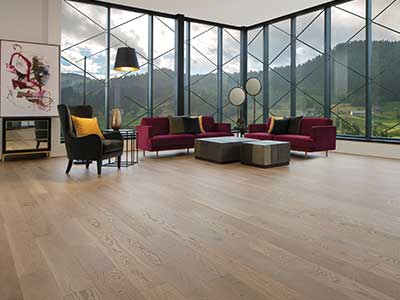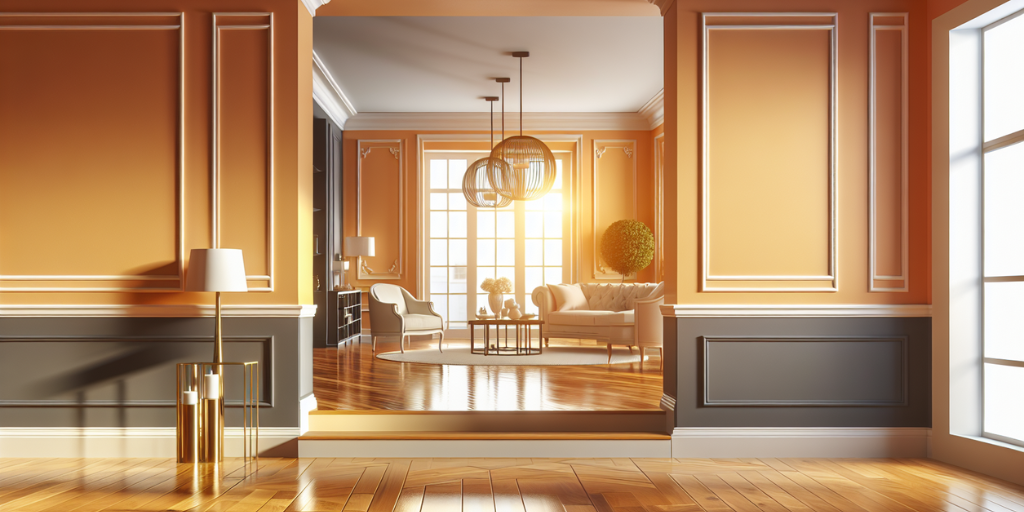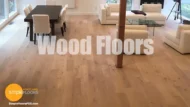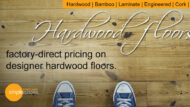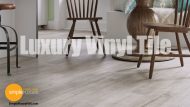Tracing the lineage of wood flooring reveals a story that spans centuries, cultures, and technological breakthroughs. Starting from the opulent halls of 17th-century European royalty to the modern-day homes of global citizens, wood floors have been a symbol of both luxury and lived history. Initially reserved for the elite, as a marker of wealth and refinement, these painstakingly handcrafted surfaces soon became a testament to human ingenuity and a reflection of society’s evolving relationship with nature and technology.
As we journey through the annals of wood flooring, from the royal chambers of France to the industrial mills of the 19th century, one can’t help but marvel at how wood floors transitioned from a luxury for the few to an accessible choice for many. This evolution was not merely a change in production techniques or availability. Still, it represented a broader shift in societal norms and values—towards beauty, towards sustainability, and towards a deeper connection with the natural world. Today, amidst modern sustainability practices and innovative technologies, wood flooring continues to adapt, offering timeless elegance while embracing our time’s ecological and aesthetic needs.
Roots in Royalty: The Early Days
The genesis of wood flooring is deeply entrenched in the annals of history, tracing back to the majestic halls and chambers of the 1600s European aristocracy. Initially, these ornate floors—crafted from solid, meticulously hand-carved planks—were a luxury reserved for the elite, symbolizing both wealth and sophistication. The era also witnessed the advent of parquet flooring in France, where artisans skillfully arranged wooden pieces into elaborate geometric patterns. This practice beautified the palaces of royalty and eventually became a coveted trend across the continent.
This exclusive association with affluence and status gradually evolved as advancements in craftsmanship and technology became more widespread. The Baroque and Renaissance periods, in particular, marked significant milestones in the proliferation of wood flooring, laying the groundwork for its popularization. As the allure of wood floors spread from the luxury of palatial dwellings to the broader public, it marked the beginning of wood flooring’s journey into the homes and hearts of people everywhere, transforming it from a symbol of royal privilege to a cherished household feature.
The Industrial Revolution: A Turning Point
The Industrial Revolution heralded a transformative era for wood flooring, significantly democratizing its accessibility beyond the echelons of the elite. With the introduction of steam-powered sawmills in the 19th century, the production of wood planks was revolutionized, making it feasible and more affordable for the wider populace to enjoy the elegance of wood floors in their homes. This period marked a departure from the exclusivity of wood flooring, paving the way for its widespread adoption across various strata of society.
As mass production took root, wood flooring transcended its status as a luxury item, becoming a commonplace choice for residential and commercial spaces. Nearly 70% of North American homes by the late 19th century featured wood flooring, a testament to its growing appeal. This era not only expanded the market for wood flooring but also introduced new opportunities for innovation and design, setting the stage for future advancements in the industry.
From Solid to Engineered: The Evolution Continues
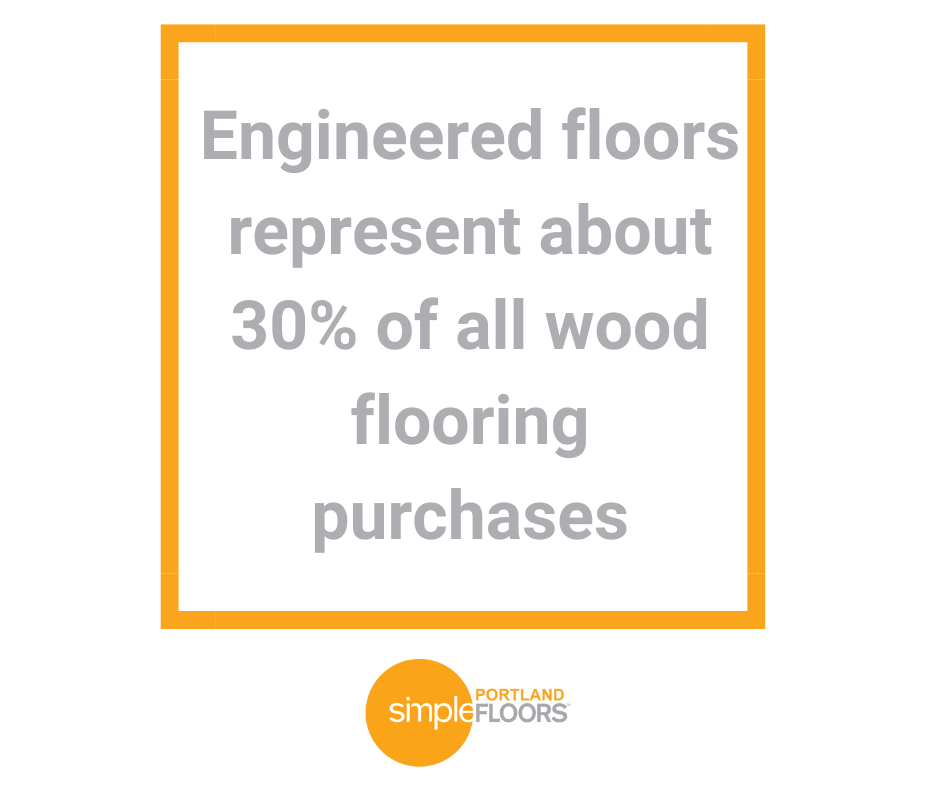 The 20th century marked another significant milestone in the evolution of wood flooring with the introduction of engineered wood. Distinguished by its layered construction—combining hardwood with stabilizing plywood—engineered wood offered a solution to the limitations of traditional solid wood floors. This innovation provided enhanced stability against changes in temperature and humidity, broadening the application of wood flooring to a wider array of environments. The adaptability and resilience of engineered wood have made it a favored choice for contemporary flooring needs.
The 20th century marked another significant milestone in the evolution of wood flooring with the introduction of engineered wood. Distinguished by its layered construction—combining hardwood with stabilizing plywood—engineered wood offered a solution to the limitations of traditional solid wood floors. This innovation provided enhanced stability against changes in temperature and humidity, broadening the application of wood flooring to a wider array of environments. The adaptability and resilience of engineered wood have made it a favored choice for contemporary flooring needs.
Reflected in the steady rise of its popularity, engineered wood now accounts for a substantial share of the wood flooring market. According to the National Wood Flooring Association, engineered floors represent about 30% of all wood flooring purchases. This shift underscores a growing consumer preference for flooring that combines the timeless appeal of wood with modern performance features, ensuring wood’s enduring presence in homes and commercial spaces alike.
Sustainable Practices: The Modern Shift
The modern era has ushered in a growing consciousness around sustainability, particularly within the wood flooring sector. As environmental concerns take center stage, there’s a marked shift towards flooring options that lessen ecological footprints. This evolution is fueled by discerning consumers who prioritize the sustainability credentials of their wood floors, gravitating towards products that guarantee ethical sourcing and minimal environmental harm. The Forest Stewardship Council (FSC) plays a pivotal role in this shift, offering certifications that validate wood as being sourced from forests managed with strict environmental, social, and economic standards in mind.
This significant tilt towards green practices is highlighted by recent findings, revealing that more than half of all homeowners now show a strong preference for eco-friendly wood flooring options. This statistic not only reflects a heightened environmental awareness but also signals a notable change in consumer behavior, emphasizing the critical role of sustainability in shaping the future of the wood flooring industry. As the demand for sustainable flooring choices grows, manufacturers and suppliers are increasingly committed to meeting these expectations, ensuring that beauty and ecological responsibility go hand in hand.
The Reclaimed Revolution: A Nod to the Past
The resurgence of reclaimed wood flooring stands as a testament to the growing desire for materials with a story and environmental consciousness. Sourced from historical buildings, old barns, and warehouses, reclaimed wood offers a unique aesthetic with rich textures and colors and contributes to sustainability by repurposing existing materials. This flooring approach brings a piece of history into modern spaces while reducing the demand for newly harvested wood.
Industry reports highlight a significant rise in the popularity of reclaimed wood floors, with sales surging by 20% in the last year alone. This trend reflects a broader shift towards authenticity and ecological responsibility in home design. As homeowners increasingly seek out flooring that combines character with a lower environmental impact, reclaimed wood flooring emerges as a compelling choice that marries the past with a mindful future.
Technological Innovations: Shaping the Future of Wood Floors
Technological advancements have dramatically reshaped the landscape of wood flooring, introducing a wave of innovation that enhances both aesthetics and functionality. Modern treatments and finishes now endow wood floors with unprecedented durability, rendering them more resistant to busy lifestyles’ everyday wear and tear. Additionally, digital printing techniques have revolutionized the design possibilities, allowing for customization with intricate patterns and a spectrum of colors.
A recent study points to a 15% uptick in wood floor installations within commercial settings, attributed to these technological strides. This surge underscores the versatility of wood flooring, capable of adapting to both the aesthetic and practical demands of contemporary spaces. As technology continues to evolve, it promises to expand the horizons of wood flooring further, ensuring its place as a preferred choice for both designers and homeowners alike.
The History of Wood Floors in Oregon
Oregon’s connection to wood flooring extends deep into its rich forestry tradition, significantly influenced by the state’s abundant natural resources. The state’s climate, characterized by ample rainfall and moderate temperatures, fosters the growth of high-quality timber, including varieties such as Douglas fir and maple, which are highly sought after for wood flooring. This natural bounty has cemented Oregon, especially Portland and surrounding areas like Beaverton and Lake Oswego, as a pivotal player in the wood flooring industry for centuries.
Historical records reveal that as early as the 1800s, wood flooring was a prevalent choice in Oregonian homes, reflecting the state’s longstanding relationship with its forests. The texture and warmth of wood floors have held a special place in the construction and design preferences throughout the region, embodying both the aesthetic and practical values cherished by its residents.
Today, Oregon continues to lead in the sustainable production and innovation of wood flooring, thanks to its focus on eco-friendly practices and local craftsmanship. Many companies within the state specialize in sourcing and producing environmentally responsible wood flooring, further reinforcing Oregon’s commitment to preserving the natural beauty and ecological harmony that define its landscape. This dedication ensures that Oregon remains at the forefront of the wood flooring industry, blending tradition with sustainability.
Reflecting on the Rich Tapestry of Wood Flooring
The narrative of wood flooring encapsulates not just an architectural element, but a rich tapestry of history, innovation, and sustainability that mirrors society’s evolution. From the intricate parquet floors of French palaces to the widespread adoption during the Industrial Revolution, wood flooring has transcended its initial status of luxury to become a universal symbol of warmth and home. This transformation was fueled by technological advances and a fundamental shift towards sustainability and ecological responsibility, reflecting a deeper societal appreciation for aesthetic beauty and environmental stewardship.
Today, as we embrace reclaimed wood for its character and champion engineered wood for its resilience, the journey of wood flooring continues to evolve. Oregon, with its lush forests and commitment to sustainability, exemplifies this evolution, marrying traditional craftsmanship with modern ecological practices. As wood flooring adapts to the demands of future generations, it remains a testament to human ingenuity—a blend of nature’s bounty and the relentless pursuit of progress. Through every plank and pattern lies a story of our shared past and a step towards a more sustainable future, firmly rooting wood flooring in the fabric of our lives and homes.

